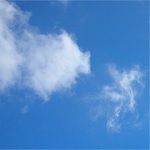|
This may have been mentioned elsewhere so far, but I think it's worth a discussion of its own: What's going on with Erdedy and the bug (p. 17-27). I have a few provisional thoughts below, but I'd like to hear what others are thinking.
______________
In no particular order:
(1) Any insistent references to bugs, generally speaking, in modern literature remind me of Kafka. This seems relevant to what has come before in IJ, b/c the theme of "inside v. outside," the "true self v. the constructed self," the "felt v. perceived self" etc. that frames all of The Metamorphosis is echoed in Hal's previous narrative. This stuff runs rampant in Erdedy's narrative, following fast on Hal's heels. There seems to be an intentional attempt to portray where someone is at as opposed to how they're perceived, and this bug plays a role in making this literal (a la Kafka). Except in IJ, the character in question considers the bug constantly, wonders at it, consciously realizes he may have something in common with it, decides against thinking too hard about what it is they have in common, etc. And as readers we are explicitly told that this is the case: in a bunch of ways, we are both asked to acknowledge how important the bug is to this particular narrative yet encouraged to shrug it off as the torrent of paranoiac prose sweeps us away (pretty effectively). Until the end of the pretty virtuoso passage, where the bug and various, unnamed "dessicated impulses" are revealed to be the focus.
(2) A friend sees the bug and its behavior as a "direct representation of addiction. It goes in, goes out, with no real purpose, but [Erdedy] doesn't want to kill it." It dominates Erdedy's sensory perception; every time he turns back to the sensory world, the bug's what he focuses on. In some sense, then, it's a representation of the "outside world," even as it mirrors back to him his "internal world."
(3) On p. 18, we find: "He sat and thought and waited in a huge uneven X of light through two different windows." This is sort of interesting as an echo of the "fingers mated into a mirrored series of what manifests, to me, as the letter X" (with "to me" so awesomely set off by commas) on the first page. Maybe something, maybe nothing. But given the weird similarity of internal/external, artifice/authenticity, and so forth between Hal and Erdedy's brief (self-told, kinda) narratives, it seems worth mentioning.
(4) The "dessicated impulses" bit is worth mentioning. Wiki has some interesting , particularly as they relate to insects. "Dessication," generally speaking, is a state of dryness. And things are clearly "dry" throughout this passage: it's a drug pun (i.e. nothing to be found in the area, it's "dry"), a weed pun ("dry" vs. "dank:" see the "genetically enhanced hydroponic marijuana" Erdedy scored from the previous contact ... who incidentally sprayed wet perfume all over his bed and his back, just saying), and a literal fact (the word "dryly" appears at least three times in the final bit btw pg. 23-24, along with "dessicated," but far more before then: while Erdedy's parting kiss of the previous woman had been "moist," he remembers sex after smoking weed with disgust ... the "dry mouths bumping at each other," his "self-conscious thoughts twisting on themselves like a snake on a stick while he bucked and snorted dryly above her," her mouth on his pillow "working dryly."). There's all kinds of dry stuff going on, and the bug seems to play a part: Representing these "dessicated impulses," then, on some other level? The "dryness" of addiction and otherness and being locked inside? Or of not being understood? Or of the sublimation of sexual (and other?) desire beneath the routines of self-satisfaction?
I dunno. Anyone have other thoughts?
Last edited by ludditerobot on Wed Jun 24, 2009 11:19 am, edited 1 time in total.
|





